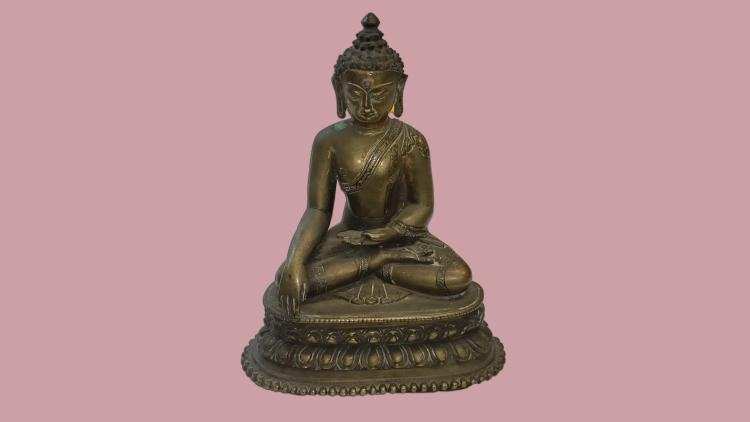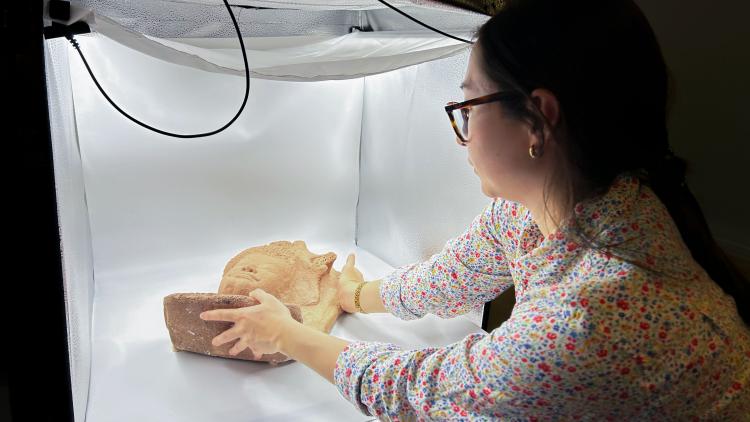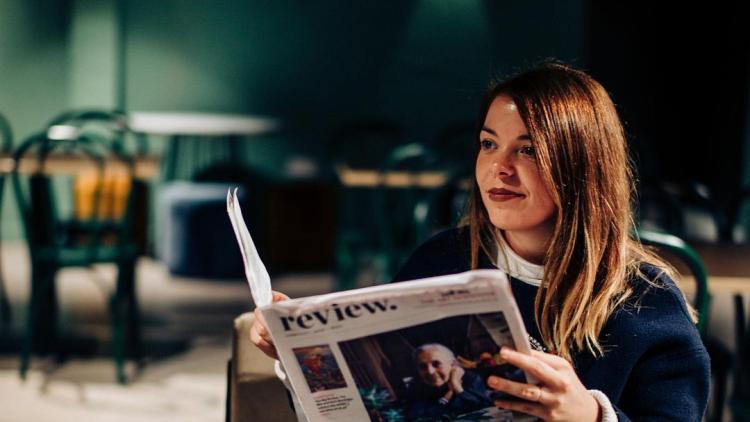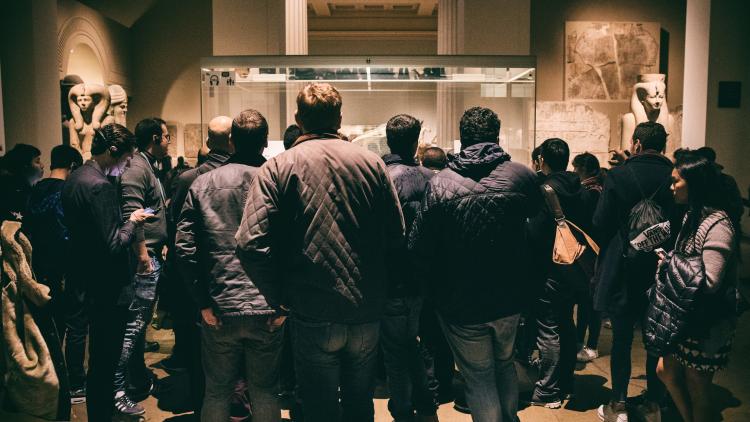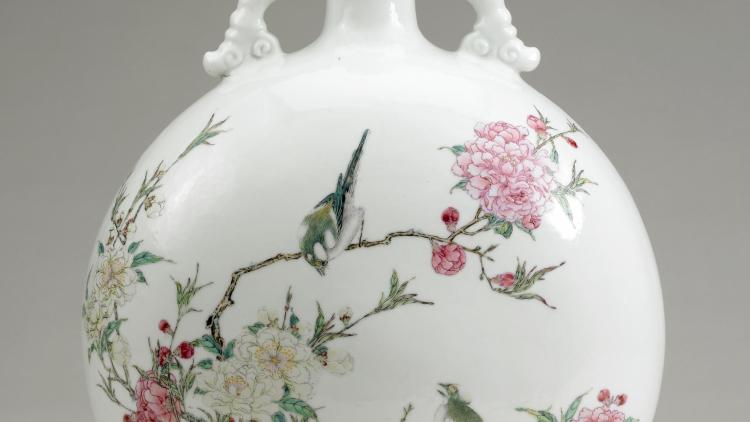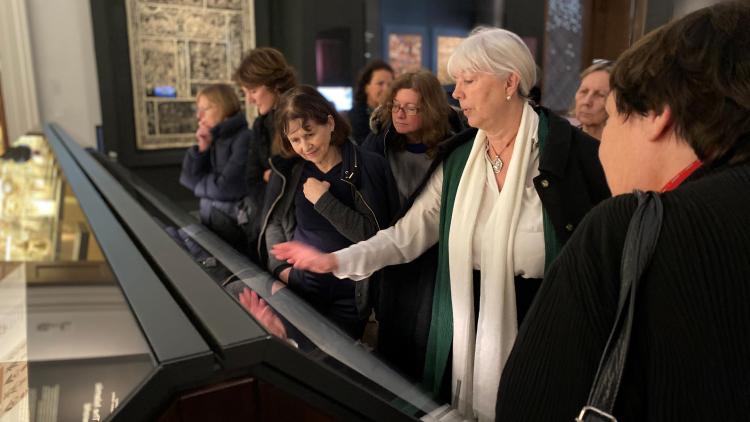BA History of Art and...
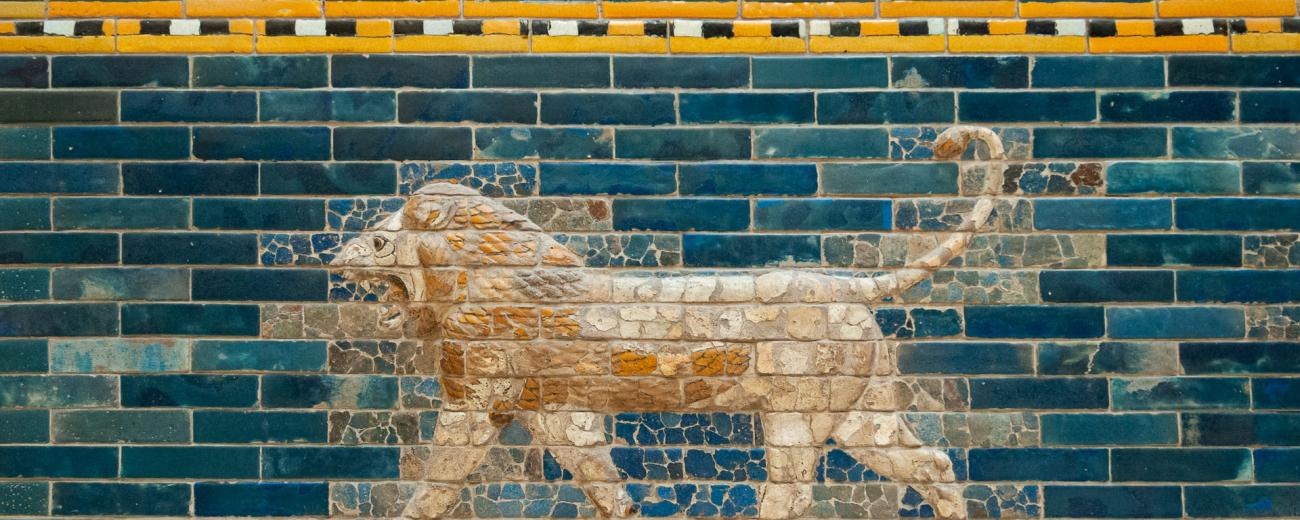

Key information
- Duration
- 3 or 4 years (a four-year combined degree involves a compulsory one year abroad)
- Start of programme
- September
- Attendance mode
- Full-time or part-time
- Location
- Russell Square, College Buildings
- Fees
-
Home student fees: £9,250
Overseas student fees: £21,990Please note that fees go up each year.
See undergraduate fees for further details. - Entry requirements
-
AAB-ABB
For joint degrees, the offer is based on the subject with the higher entry requirements
Contextual: ABB-BBB
-
See undergraduate entry requirements and English language requirements for international and alternative entry requirements.
Course overview
The BA History of Art (combined degree) is an unrivalled opportunity to study the visual arts, architecture and material culture of Asia, Africa and the Middle East.
The Department of History of Art and Archaeology has world-leading experts in Asian and African art history and archaeology, whose groundbreaking research informs and is informed by their teaching.
In the first year, you will be introduced to the art and archaeology of different regions. You will also receive theoretical and methodological training to prepare you for the study of Asian and African art. In subsequent years, students broaden and deepen their knowledge and have the chance to specialise in particular regions or themes. An emphasis is placed on training students in visual analysis, through the close study of images and objects. Students are also provided with a critical introduction to the creative and cultural industries.
Some two-subject programmes are completed in three years while others take four years and include a year abroad.
Why study BA History of Art (combined degree) at SOAS?
- SOAS is ranked 15th in the UK for Arts and Humanities (QS World University Rankings 2023).
- We are ranked 6th in the UK for employability (QS World University Rankings 2023).
- 100% overall student satisfaction (NSS 2022)
Degree combinations
May be combined with
- Arabic +, TV63 BA/AHAA
- Chinese +, TV13 BA/CHAA
- East Asian Studies, T41A BA/EA
- Global Development, TV97
- History, VV13 BA/HisHAA
- International Relations, TV45
- Japanese +, VT32 BA/HAAJ
- Korean +, VT34 BA/HAAK
- Languages and Cultures, TTV3 LC/HoA
- Music, VW33 BA/HAAM
- Politics, TV79
- Social Anthropology, VL36 BA/HAASA
+ 4-year degree with (compulsory) 1-year abroad
++ 3 or 4-year degree with option of 1-year abroad
Key information set data
Structure
The structure of modules reflects the importance given to conceptual clarity, methodological rigour and the independent interests of students. Special emphasis is placed on the exploration of arts and artefacts as evidence in historical, religious and cultural studies of societies and cultures, and particular importance is given to enhancing students' visual analysis skills.
One purpose of the introductory year is to provide a basis for the student's selection of modules in the second and third years. The selection of modules in the third year is normally intended to develop the chosen specialisations of the second year.
Occasionally the availability of optional modules changes as a result of staffing and other circumstances. Students who had signed up for such modules will be notified as soon as possible and given the opportunity to choose from available alternatives.
Important notice
The information on the website reflects the intended programme structure against the given academic session. The modules are indicative options of the content students can expect and are/have been previously taught as part of these programmes. However, this information is published a long time in advance of enrolment and module content and availability is subject to change.
Year 1
Compulsory modules
Students will take the following compulsory modules.
And
Modules from second subject
Students choose modules to the value of 60 credits from their second subject
Year 2
Compulsory modules
Students will take the following compulsory modules.
And
Year 2 guided options
Students take modules to the value of 30 credits from either list A or list B.
And
Modules from second subject
Students choose modules to the value of 60 credits from their second subject
Year 3 - Independent Study Project in History of Art
Year 3 guided option
And
Students take modules to the value of 30 credits from either list A or list B.
And
Modules from second subject
Students choose modules to the value of 60 credits from their second subject
Year 3 (for students not completing an Independent Study Project in History of Art)
Students must take an Independent Study Project, either in History of Art, or in their second subject.
Year 3 guided options
Students take modules to the value of 60 credits from either list A or list B.
And
Modules from second subject
Students choose modules to the value of 60 credits from their second subject
Guided options
List A and list B will be offered in alternating years.
List A
List B
Teaching and learning
All first year modules involve a weekly lecture and tutorial. Iin the 2nd and 3rd year, where student numbers may be lower, a seminar may replace the lecture.
For most modules, assessment involves coursework and an unseen examination.
- Year 1: In the first year coursework entails short, concentrated pieces of work.
- Year 2 and 3: coursework emphasis shifts to longer papers.
- Year 4: In the final year students are required to complete an Independent Study Project on a subject of their choice, and are also encouraged to undertake projects, supervised by members of staff, in the form of an essay-based advanced.
Year abroad
A 4-year combined degree involves a year abroad
Contact hours
All full-time undergraduate programmes consist of 120 credits per year, in modules of 30 or 15 credits. They are taught over 10 or 20 weeks. The programme structure shows which modules are compulsory and which optional.
As a rough guide, 1 credit equals approximately 10 hours of work. Most of this will be independent study. It will also include class time, which may include lectures, seminars and other classes. Some subjects, such as learning a language, have more class time than others. In the School of Arts, most undergraduate modules have a one- or two-hour lecture or seminar every week. Some, but not all, also have a 1-hour seminar or tutorial every week.
SOAS Library
SOAS Library is one of the world's most important academic libraries for the study of Africa, Asia and the Middle East, attracting scholars from all over the world. The Library houses over 1.2 million volumes, together with significant archival holdings, special collections and a growing network of electronic resources.
Fees and funding
Fees for 2023/24 entrants per academic year
| Programme | Full-time | |
|---|---|---|
| Home students | Overseas students | |
|
BA, BSc, LLB |
£9,250 |
£21,160 |
| BA/BSc Language year abroad | £1,385 | £10,580 |
Please note that fees go up each year.
See undergraduate fees for further details.
Employment
Students in the School of Arts develop a critical and theoretically informed approach to global arts and culture. In addition to an intercultural awareness and practical expertise, graduates gain a wide portfolio of transferable skills which are especially sought after in the creative and cultural industries.
Recent graduates have been hired by:
- Christie’s
- Christine Park Gallery
- Crisis
- Design Museum
- Hong Kong Museum Of Art
- India Foundation For The Arts
- Japanese Gallery
- Museum of East Asian Art
- Music in Detention
- National Gallery
- Pan Arts
- People Projects Culture & Change
- Roundhouse Trust
- Somerset House Trust
- Songlines Magazine
- Sotheby's
- South Asian Art UK
- Stratford Circus Arts Centre
- Taiwan Embassy
- The Alliance for Global Education
- The British Embassy
- The National Museum Of Korea
- The Royal Collection
- Victoria and Albert Museum
Find out about our Careers Service.

